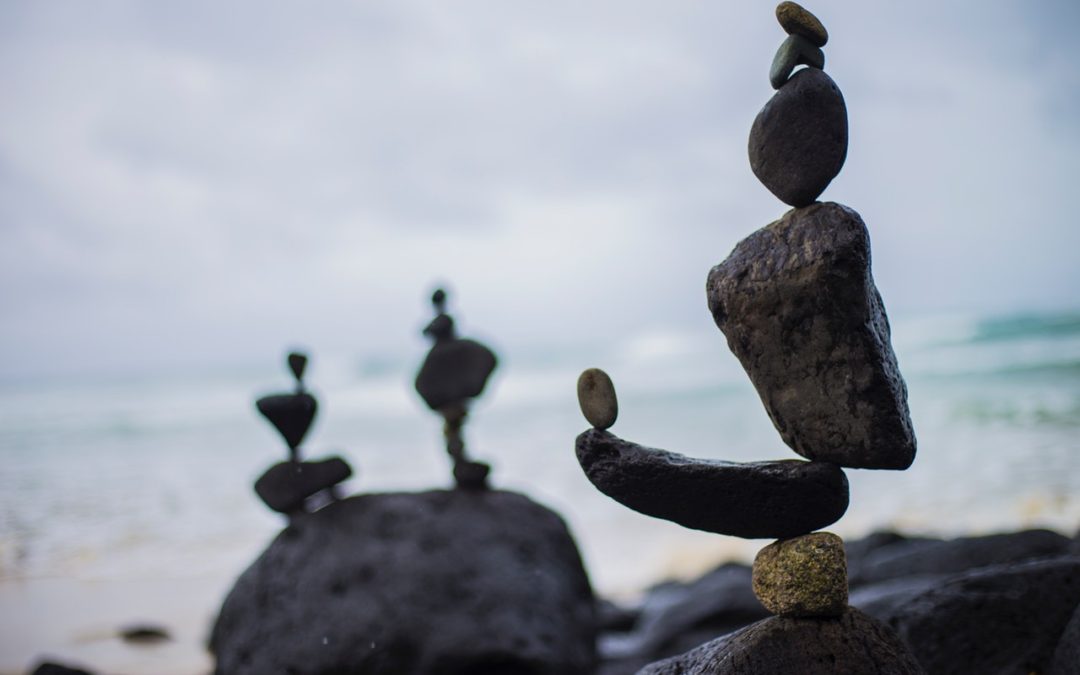Recently I was having a catch-up call with a close friend. She spoke of how many years it took for her to be able to love herself for the whole of who she was, where she could be a caring and kind friend, or at least friendish, towards even the more excruciating and annoying aspects of her personality. She spoke of a peaceful place, a rare and simple moment undisturbed by arguments existential, spiritual or pragmatic. She used the word harmony.
My friend is experienced with tough times, and I knew that when she used the word “harmony,” she wasn’t talking about a choir of angels singing only pretty notes, but of a well-earned deconflicted time where all the action figures of her inner psyche were in concert. She felt safe, loved and cared for, and could rest in a moment’s peace.
I described how musical harmony worked, and how dissonance was as important as consonance in harmonic motion. As I elaborated on the subject my friend got excited and urged me to write an article about how harmony actually works in music as a more realistic analogy to harmony in human life.
So for this article, like a million Hallmark cards and homilies, I will talk about harmony.
I think most of us appreciate harmony in our lives. When everything feels just so right all around, we don’t want that feeling to go away. We don’t want to sing a wrong note. We don’t want to mess it up.
And yet… in life, there’s really no such thing as “balance,” but there is such a thing as “balancing.” In life “balance” is more a verb than a noun. The same can be said of harmony in life. We are learning to “harmonize,” and life being life, what harmony looks and feels like changes with the circumstances. We don’t grow without friction. Harmony is always in motion.
When I was studying music composition at the UC Berkeley Department of Music, for theory class I had to compose a four part chorale in the style of Bach every week for the first year. It was great training, and it was challenging trying to write something within the form that I could actually listen to without frowning.
We were made to study Bach chorales because they’re like a distillation of harmonic motion in Western music. Studying them is like looking at musical harmony through a microscope. Every single beat defines a harmonic interaction.
The trippy thing is that when you study those four voices soulfully doing their thing, there are a lot of what a clever student of mine called “Bach’s Bad Notes.” Notes stacked on top of each other in clear dissonance. But those “bad notes” propelled and gave meaning to the “good” notes that followed.
Those dissonant moments create the necessary tension to push the ear and emotions towards a convincing resolution. The ending may be sad or happy or both, but it is meaningful because of the tensions that led us there.
What I’m getting at is that it’s important to include our uglies, our aches and fears in how we understand harmony in life.
Mel Powell, one of my favorite theory and composition instructors at the California Institute of the Arts, described the emotional movement of a musical composition as leaving home, going through experiences akin to what we may encounter in life, and changed by what we have experienced, we return home. He described home, the root note and chord of a song, as static, a place of repose. The life and substance of a song was created through friction and movement, tension and relaxation.
Pandit Pranath, a revered North Indian sacred singer had a similar perspective. He described the root note of a song as Brahma, or Atman, the Hindu God of creation, undifferentiated source, and the songs as journeys of departure from and return to the God source.
As I was writing this article I took a break to read the news. I had a moment where I felt sad and unsafe, even paralyzed, thinking about the violence, stupidity, and tragedy going on, as well as some personal challenges. Nothing really new in terms of life on earth, but at the time the stuff got to me. Of course, my first thoughts were “Ouch this hurts. How do I get out of here?”
But I wanted to explore what a more inclusive harmony might look like in my excruciating moment. I wanted to find a harmony that included everything. So I held off from prematurely imposing some feel-good harmonizing correction on my experience. The pain I was feeling belonged to my authentic experience. I wanted to make sure that all the players were included. I wanted both the notes of my pain and the notes of my peace to find a relationship with each other that moved me towards a strength of love and compassion, hope and grit.
I took my time. It was a bit like conducting an inner orchestra. “Let’s go a bit softer on the despair, a little less desperate and domineering on the happiness. Let grief and love sing together. Ooh. A warm peaceful place showed up! Let’s bring that up to the foreground and let it sustain for longer, let that warmth touch and befriend the scared places.” I wanted to find a harmony that had room to encompass all of my experience. Eventually I did come to a place of peace, compassion, and freedom, and because I got there through a rough time, that sense of peace and freedom had more bottom to it.
I relaxed into being human and loved. Harmony. Keep moving.

